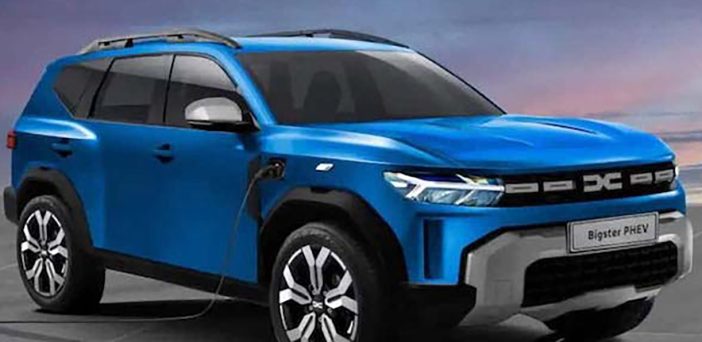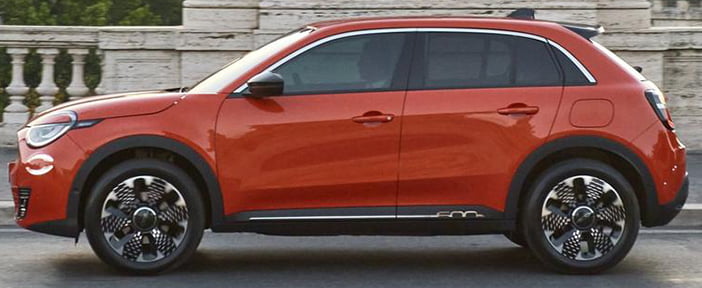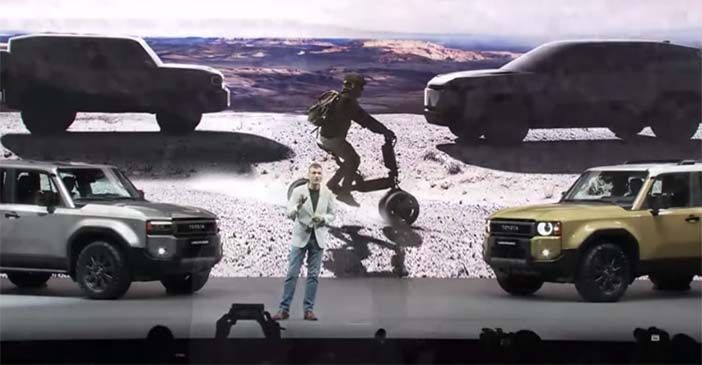+++ The auto industry in CHINA is increasingly the one to watch, and it’s threatening a slew of global automakers, now including Tesla. Last year, Chinese automakers gained ground with buyers over non-domestic auto companies like Ford, General Motors and Stellantis. One estimate last month suggested that growth has continued: domestic companies in China are on pace to control a majority share of its car market this year for the first time. Not only are car buyers there buying more and more electric vehicles, they’re buying Chinese EVs – not imports. Data from Chinese advisory firm Automobility found that, as of the first 6 months of 2023, purchases of gas-powered cars in China had declined year-over-year, while purchases of “new energy vehicles” (including EVs and plug-in hybrid EVs) grew significantly. More than 80% of NEVs sold were Chinese brands. But some of that car-buying demand in China starting to wane, according to an August 14 note from Morgan Stanley. “Various EV makers have launched limited-time campaigns amid subpar demand visibility and macro uncertainty”, the bank’s analysts said, adding that price competition is expected to intensify this quarter. That demand crunch is bound to have a 3-pronged impact on the industry: 1) Slowing auto demand in China is actually bad news for the legacy car companies. First, the automakers like Ford and GM that have tried to strategize salvaging their losses in China could be too late, Morgan Stanley analysts said. “Not only do legacy automakers have to face tough EV competition in China from the likes of the vertically integrated and increasingly affordable EVs”, the note said, “they also have to reverse the trend of decreasing sales volume, profit and share in a decelerating domestic market”. It’s a multi-pronged storm for traditional firms and they know they’re up against Chinese affordability, variety and quality, according to Morgan Stanley. Ford CEO Jim Farley “has been pretty consistent about the strength we see in the BEV capability of the Chinese OEMs”, the automaker’s chief financial officer John Lawler said at a Deutsche Bank conference in June, per a Sentieo transcript. “I think we’re past the point there that you can say, are they going to, are they not?” 2) Price cuts aren’t helping Tesla so much anymore. Weakening demand means many automakers, both Chinese and otherwise, are dropping their prices. Tesla has repeatedly slashed the cost of its popular vehicles there, as have Chinese companies like giant BYD; so much so that a (temporary) price war truce was initiated. That didn’t last long; Tesla has had to resort to cuts yet again to try to keep up with the Chinese firms. “We’re still growing our market share in China”, Tesla senior vice president of automotive Tom Zhu said at the firm’s Investor Day in March. “Especially early this year, we had a price adjustment. After that, we actually generated a huge demand, more than we can produce, really… I’m not too concerned about the market share in China”. But while early cuts might have sparked demand, Morgan Stanley analysts called “Tesla’s further promotional activity of particular concern”. The cuts are all but to no avail amid China’s decelerating domestic market, per Morgan Stanley. As good as Tesla’s latest deals might be, they can’t outweigh low interest. 3) Chinese companies are forging ahead elsewhere while domestic demand eases.
This just means that the Chinese companies will continue their push across the globe. The Chinese EV-makers are shrugging off the lessening demand and diving into the next target. “In our view, China will shift from being an importer to exporter of cars as supply-dynamics invert this decade”, analysts said in the note. Chinese EV-makers are already foraying into Europe (with the potential for snatching up 15 percent of market share there within 2 years, according to consultancy KPMG) and they have the industry watching as they eye the US next. +++
+++ DACIA will be categorically repositioned as an offroad, ‘lifestyle’-oriented brand to rival Jeep as it pushes into new, larger market segments. The Renault Group’s design chief, Laurens van den Acker, told that CEO Luca de Meo voiced his desire for the Romanian company to have “an aspiration beyond affordability” upon his arrival in 2021. “This is where the outdoor theme came up”, said van den Acker. “In my view, there’s no serious competitor for Jeep in Europe. Why couldn’t Dacia be that? There’s no affordable brand that’s linked to the outdoors, that gets you out of town, which, especially since the Covid days, is becoming extremely relevant. Dacia is a brand that’s very well positioned for people who love the outdoors. It gives you 2 reasons to buy the car, not just 1 reason”. The first car to exemplify this approach will be the next-generation Duster, which will arrive in production form in 2024 as a more rugged and ‘lifestyle’-focused version of the affordable small SUV. Following that will be the Bigster, a larger and more expensive SUV aimed at the family market. Yet despite the increase in size and inevitably price, the Bigster won’t be significantly more premium than Dacia’s existing line-up, van den Acker confirmed. “Larger is true but premium is not true”, he said. “The reality is that if you start making bigger cars, you’re up against other competitors. So we can’t simply copy the recipe from Sandero to the C-segment: that wouldn’t work. So we do have to be very clear about what’s facing us in terms of competition, because we’re not playing in the same game. So Dacia will do what is right to be credible in the C-segment without losing its competitive advantage, which is low pricing”. Van den Acker believes the biggest challenge now facing the Renault Group is the wave of highly competitive Chinese cars heading towards Europe but said Dacia is best positioned to lead a fightback against the new brands. “When all the brands are getting more expensive due to the transformation to EVs, not everyone will be able to afford this step”, he said. “And so there will be people wanting to look for decent, affordable, essential, cool transportation. I hope Dacia is going to pick up a lot of the leaves that will be falling off the trees”. Indeed, Dacia’s ethos has become especially poignant as inflation has soared over the past few months. Its delivery volume increased by 24% during the first half of 2023 and it became the second-biggest brand for retail sales in Europe, with an 8.4% market share. +++

+++ There will be no more FIAT sports cars and nor will the brand target large or luxury car segments, boss Olivier François has confirmed. “That is the beauty of parent firm Stellantis: we are a house of 14 brands”, he said. That means each brand must have a clear purpose and make money. “For Fiat, we make money. We are simplicity. We are smaller cars. We are not sports cars. We are not luxury. We are not big cars”. He added that Fiat won’t launch any cars longer than 4.5 metres (around the size of a Volvo XC40) or shorter than 3.6 metres (excluding the new Topolino electric quadricycle). These comments close the door on a successor to the Mazda MX-5-derived Fiat 124 Spider. However, when asked if Abarth could make its own bespoke sports car, François replied: “It may have a space”. The performance brand, originally a Fiat tuning outfit, hasn’t launched an entirely bespoke model since coming under Fiat ownership in 1971. +++
+++ The new FIAT 600E will be the brand’s next model to receive the Abarth treatment as the Italian performance division expands its line-up. The go-faster crossover will follow the 500e as Abarth’s second electric car and initiate its first new model line since the 124 Spider bowed out in 2019. Fiat and Abarth CEO Olivier François revealed no details of the sporting crossover, but on the subject of the viability of an Abarth 600e, he said: “It’s logical”. Expected to land in early 2025 (mirroring the gap between the arrivals of the Fiat 500 and its Abarth sibling), the 600e will no doubt bring a significant power boost over the standard Fiat model. In the 500e, a more responsive motor ramps up power and torque to 155 hp and 240 Nm; increases of 37 hp and 15 Nm over the standard 500. If the 600e gets a similar treatment, it will be armed with around 195 hp and 270 Nm. Although a crossover, the 600e can still be expected to offer a Scorpion Track driving mode, like its smaller sibling. In its quickest setting, the 600e is likely to be good for a 7.0 seconds 0-100 kph time, which would mirror the lighter 500e. Abarth has previously said blistering acceleration from rest (a hallmark of electric cars) isn’t the outright aim of its new-era line-up and it’s instead focusing on better mid-range performance. Power will be drawn from the same battery as in the regular 600: a 54 kWh pack. It offers 400 km of range in the 600, but given the added grunt of the 600e, a real-world range closer to 320 km is more likely. What remains to be seen is whether Abarth will add a second motor on the rear axle for improved traction and potency. Fellow Stellantis brand Jeep showed a dual-motor concept version of its closely related Avenger at last year’s Paris motor show, suggesting the e-CMP platform can easily accommodate a 4-wheeldrive powertrain, but has yet to reveal the performance implications. Otherwise, the 600e will be marked out by a suite of sporty touches, such as bucket seats, an Alcantara-clad steering wheel, distinctive paint options and bespoke wheel designs. It is even possible that the 600e will follow its smaller sibling by having a speaker underneath it, producing a faux engine note to accompany acceleration and make it more appealing to petrolheads. +++

+++ U.S. auto safety regulators said Monday they are investigating whether FORD ’s 2022 recall of nearly 49.000 Mustang Mach-E vehicles adequately addressed concerns. Ford issued the 2022 recall because high voltage battery main contactors may overheat from DC fast-charging and repeated wide-open pedal events, which could result in an immediate loss of power, increasing the risk of a crash. Following the recall, Ford issued a technical service bulletin to replace the High Voltage Battery Junction Box on recalled vehicles. The National Highway Traffic Safety Administration said it has opened a recall query after receiving 12 complaints from consumers regarding Mach-E vehicles that received recall fixes. +++
+++ t’s been a tough summer for the JEEP Grand Cherokee , as the SUV is going on its 4th recall of the season. It started innocently enough, with roughly 17.000 units dragged into an action in May over missing airbag warning labels. The ante went up a week later with almost 90.000 units recalled over a steering column that had possibly been installed incorrectly. Doubling down on the trend in June, 331.401 units had to see dealers over rear springs that could potentially detach from the vehicle while driving. The severity and number of vehicles involved this time are smaller, thankfully. The recall is to address a potentially faulty rearview camera system. In certain units, software in the central vision processing/park assist module (CVPAM) might prevent the camera image from reaching the infotainment screen. Unlike a lot of other recalls, Jeep says that 100% of the vehicles in the recall population suffer this issue. Jeep says it will begin notifying owners on October 3 about seeing their dealers to have new CVPAM software installed. The Compass has been hit with its own recall, aimed at 181.999 units. In this case, bad programming in the body control module (BCM) software might cause the instrument panel cluster lighting to lose adjustability. In the worst case, drivers might not be able to read the instruments. Here again, 100% of the recall population is expected to have this issue. The remedy is a trip to the dealer to load updated BCM software. Notices will start going to owners on October 3. +++
+++ TOYOTA has filed a trademark application for something called the Land Hopper in Japan. It’s unknown on what vehicle the mysterious moniker will appear, but the recent 2024 Land Cruiser presentation may offer some clues. The trademark filing falls into the “vehicles” category. This led to speculation that it might apply to one of the vehicles shown in silhouette on screen during the Land Cruiser presentation. The image appears at the 18:39 mark of the video, in which 3 vehicles can be seen in profile. On the left is a short-wheelbase SUV that resembles a shortened Land Cruiser. This particular one almost looks like it could be an FJ Cruiser successor. The vehicle on the right appears to be a large, possibly 3-row crossover. The distinct flat bodywork where a grille would normally go indicates it might have battery-electric motivation. It almost looks like a modified BZ4X. In his speech, chief branding officer Simon Humphries said: “This future could mean anything, from carbon-neutral approaches to ensuring the Land Cruiser brand is more affordable and within reach of even more people around the world. Or it may even mean exploring new approaches to mobility that enhance not only the Land Cruiser experience, but also further people’s freedom in motion”. A foldable electric bike might be the perfect companion to the Land Cruiser. It might even be designed to fit in to the cargo area, like Honda did with the Motocompo in the 1980s. It wasn’t mentioned in the forum post, but on the same day Toyota also filed a trademark for the name Tazuna in Japan. From as far as we can tell, the word means “bridle” in Japanese. What kind of vehicle it might apply to is anyone’s guess. +++


